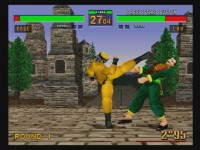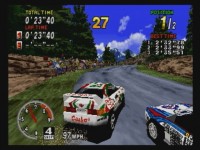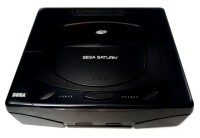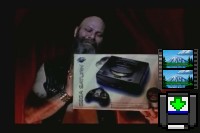

|
The Saturn is based on Sega's Model 2 arcade hardware, made famous with games such as Virtua Fighter 2
and Sega Rally, similar to how the Sega Genesis was based on the System 16 and System 18 arcade boards.
This eases the conversion of many popular arcade titles to the Saturn, with a reduced need to cut features
and details from games. Properly utilized, the power of the Saturn could make for a revolution in both 2D
and 3D games, though some have speculated that the multiple processors in the system could prove difficult
for all but the most seasoned programmers to tame.
Not just different in its multiple processor configuration, the Saturn is oriented around quad geometry for
its 3D graphics. More traditionally, triangular polygons are used in 3D modeling, allowing for more complex
shapes. While it is possible to assign the same point to two vertices of a quad to fake a triangular polygon,
this can cause issues with z-fighting (where two objects in the same position have the same priority, and
appear to flicker or jitter) and texture warping.
|
|
 The forward thinking in the design of the Saturn lends itself to future expandability through its two
expansion ports. This means that upgraded functionality can be added to the system, with the appropriate
hardware add-ons. With any luck, these won't become another instance of the 32X, being all hardware, with no
software to properly show its strengths.
The forward thinking in the design of the Saturn lends itself to future expandability through its two
expansion ports. This means that upgraded functionality can be added to the system, with the appropriate
hardware add-ons. With any luck, these won't become another instance of the 32X, being all hardware, with no
software to properly show its strengths.
|

















































